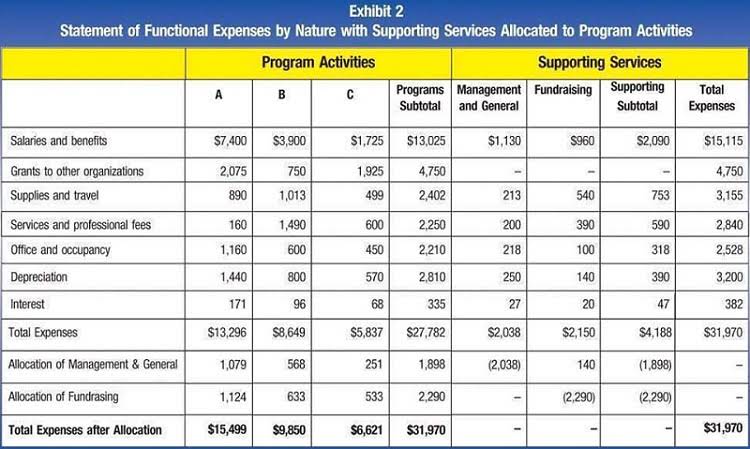Retained earnings can also indicate something about the maturity of a company—if the company has been in operation long enough, it may not need to hold on to these earnings. In this case, dividends can be paid out to stockholders, or extra cash might be put to use. At each reporting date, companies add net income to the retained earnings, net of any deductions.
Different Financial Statements
Since the retained earnings account is an equity account, it has a credit balance. Thus, credits increase the account and debits decrease the account balance. When I was first learning accounting, it took me a little while to understand exactly what the RE account was. It’s just an account where the net income or net loss for each year is stored eternally, so it’s just the total net income or loss the corporation has achieved in its existence. Your accounting software will handle this calculation for you when it generates your company’s balance sheet, statement of retained earnings and other financial statements. Instead, they reallocate a portion of the RE to common stock and additional paid-in capital accounts.
Additional Paid-In Capital
Between 1995 and 2012, Apple didn’t pay any dividends to its investors, and its retention ratio was 100%. But it still keeps a good portion of its earnings to reinvest back into product development. According to the provisions in the loan agreement, retained earnings available for dividends are limited to $20,000.
- This is because due to the increase in the number of shares, dilution of the shareholding takes place, which reduces the book value per share.
- When revenue is shown on the income statement, it is reported for a specific period often shorter than one year.
- You should report retained earnings as part of shareholders’ equity on the balance sheet.
- Revenue sits at the top of the income statement and is often referred to as the top-line number when describing a company’s financial performance.
- Traders who look for short-term gains may also prefer dividend payments that offer instant gains.
- Generally speaking, a company with a negative retained earnings balance would signal weakness because it indicates that the company has experienced losses in one or more previous years.
Retained Earnings Formula: Definition, Formula, and Example
As a result, any items that drive net income higher or push it lower will ultimately affect retained earnings. Retained earnings are reported under the shareholder equity section of the balance sheet while the statement of retained earnings outlines the changes in RE during the period. Retained earnings are a clearer indicator of financial health than a company’s profits because you can have a positive net income but once dividends are paid out, you have a negative cash flow. Stay on top of your finances with real-time access to your general ledger, balance sheet, profit and loss, and cash flow statements. Kpi.com offers monthly, quarterly, or annual management financial reports produced to local and international financial reporting standards.
Resources for Your Growing Business
- After almost a decade of experience in public accounting, he created MyAccountingCourse.com to help people learn accounting & finance, pass the CPA exam, and start their career.
- If a potential investor is looking at your books, they’re most likely interested in your retained earnings.
- Alternately, dividends are cash or stock payments that a company makes to its shareholders out of profits or reserves, typically on a quarterly or annual basis.
- This, of course, depends on whether the company has been pursuing profitable growth opportunities.
- In the first line, provide the name of the company (Company A in this case).
The specific use of retained earnings depends on the company’s financial goals. Ultimately, the company’s management and board of directors decides how to use retained earnings. Revenue, net profit, and retained earnings are terms frequently used on a company’s balance sheet, but it’s important to understand their differences. When a company consistently experiences net losses, those losses deplete its retained earnings. Prolonged periods of declining sales, increased expenses, or unsuccessful business ventures can lead to negative retained earnings.
Retained Earnings vs. Net Income
Other comprehensive income includes items not shown in the income statement but which affect a company’s book value of equity. Pensions and foreign exchange translations are examples of these transactions. The amount of profit retained often provides insight into a company’s maturity.
Retained Earnings Formula and Calculation
- This account is part of the Share Capital section of a company’s balance sheet and can be used for reinvestment in the business or to pay down debt.
- It reconciles the beginning balance of net income or loss for the period, subtracts dividends paid to shareholders and provides the ending balance of retained earnings.
- The income statement calculates net income, which is the balance you have after subtracting additional expenses from the gross profit.
- Retained Earnings (liability) are Credited (Cr.) when increased & Debited (Dr.) when decreased.
- It reveals the “top line” of the company or the sales a company has made during the period.
- Yes, having high retained earnings is considered a positive sign for a company’s financial performance.
Changes in the composition of retained earnings reveal important information about a corporation to financial statement users. A separate formal statement—the statement of retained earnings—discloses such changes. Even though some refer to retained earnings appropriations as retained earnings reserves, using the retained earnings is debit or credit term reserves is discouraged. As an investor, you would be keen to know more about the retained earnings figure. For instance, you would be interested to know the returns company has been able to generate from the retained earnings and if reinvesting profits are attractive over other investment opportunities.
Alternatively, a large distribution of dividends that exceed the retained earnings balance can cause it to go negative. Generally speaking, a company with a negative retained earnings balance would signal weakness because it indicates that the company has experienced losses in one or more previous years. However, it is more difficult to interpret a company with high retained earnings. If the company had not retained this money and instead taken an interest-bearing loan, the value generated would have been less due to the outgoing interest payment.
- The normal balance in a company’s retained earnings account is a positive balance, indicating that the business has generated a credit or aggregate profit.
- Also, this outflow of cash would lead to a reduction in the retained earnings of the company as dividends are paid out of retained earnings.
- The amount of retained earnings that a corporation may pay as cash dividends may be less than total retained earnings for several contractual or voluntary reasons.
- Prolonged periods of declining sales, increased expenses, or unsuccessful business ventures can lead to negative retained earnings.
- Since in our example, December 2019 is the current year for which retained earnings need to be calculated, December 2018 would be the previous year.





